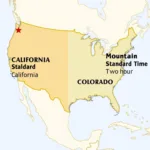Food coloring can definitely stain clothes, especially porous fabrics like cotton. While it might seem harmless, that vibrant hue can quickly turn into a laundry nightmare if not addressed promptly and correctly. So, if you’ve just experienced a food coloring mishap, don’t panic! This article will guide you through everything you need to know about tackling these stubborn stains and saving your favorite garments. Learn how to pre-treat, wash, and even rescue clothes that seem permanently marked.
Dealing with food coloring stains can be tricky, and the success of stain removal often depends on the fabric type and how quickly you act. For tips on removing food coloring from your skin, check out how to get food coloring off my hands. The faster you address the stain, the better your chances of complete removal. Ignoring a food coloring stain, even for a short period, can allow it to set deeply into the fibers, making it much more challenging to remove.
Understanding Food Coloring Stains
Why is Food Coloring So Difficult to Remove?
Food coloring is designed to be vibrant and long-lasting, which unfortunately translates to stubborn stains on clothing. These dyes are often highly pigmented and can bond quickly with fabric fibers, especially natural fibers like cotton and linen. The longer the dye sits on the fabric, the stronger the bond becomes, making removal increasingly difficult.
Factors Influencing Stain Removal
Several factors play a role in how easily (or not!) a food coloring stain can be removed. The type of fabric is a major consideration – natural fibers tend to absorb dyes more readily than synthetic ones. The concentration and color of the food coloring also matter; darker and more concentrated dyes are typically harder to remove. Finally, the age of the stain is crucial. Fresh stains are much easier to tackle than older, set-in stains.
Effective Methods for Removing Food Coloring Stains
Pre-Treating the Stain
Before you toss the stained garment into the washing machine, pre-treating is essential. Rinse the stained area under cold running water, working from the back of the fabric to push the dye out. Avoid using hot water, as this can set the stain.
You might wonder how long these stains last. Find out more about how long does food coloring last. Applying a stain remover specifically designed for dyes can be helpful. Alternatively, a paste of baking soda and water can be applied to the stain and left to sit for 30 minutes before washing.
Washing the Stained Garment
After pre-treating, wash the garment in cold water with a good quality laundry detergent. Check the care label for specific washing instructions. Avoid washing the stained item with other clothes, especially whites, to prevent the dye from transferring. If you’re worried about washing whites with colors, learn more about can you wash white clothes with colors.
Dealing with Stubborn Stains
If the stain persists after washing, don’t despair! You can try soaking the garment overnight in a solution of cold water and oxygen bleach. This can help to lift the remaining dye from the fibers.
Another option for stubborn stains is rubbing alcohol. Apply the alcohol directly to the stain and blot gently with a clean cloth. Test this method on an inconspicuous area first to ensure it doesn’t damage the fabric. For more general tips on food coloring removal, see how to remove food coloring. If you are considering tie-dyeing a colored shirt, here are some helpful tips: can you tie dye a colored shirt.
“For delicate fabrics, it’s always best to test any stain removal method on a hidden area first to avoid damaging the material,” advises Dr. Emily Carter, Textile Specialist at the Fabric Care Institute.
Preventing Future Food Coloring Stains
The best way to deal with food coloring stains is to prevent them in the first place. When working with food coloring, wear an apron or old clothes you don’t mind staining. Cover surfaces with newspaper or plastic sheeting to protect them from spills. Promptly clean up any spills to prevent them from setting.
“Prevention is key when working with dyes. Taking simple precautions can save you a lot of hassle later on,” says Dr. Carter.
Conclusion
Can food coloring stain clothes? Absolutely. But with quick action and the right techniques, you can successfully remove these vibrant stains and keep your clothes looking their best. Remember to pre-treat, wash in cold water, and try stronger methods for stubborn stains. By following these tips, you can conquer those colorful culprits and keep your wardrobe vibrant and stain-free.
FAQs
- Can I use hot water to remove food coloring stains? No, hot water can set the stain, making it more difficult to remove. Always use cold water.
- What should I do if the stain is on a delicate fabric? Test any stain removal method on an inconspicuous area first. Consider consulting a professional cleaner for delicate fabrics.
- Can I use bleach on food coloring stains? Oxygen bleach can be effective, but avoid chlorine bleach, as it can damage the fabric.
- Is it better to blot or rub a food coloring stain? Blotting is always better than rubbing. Rubbing can spread the stain and damage the fabric.
- What if the stain is old and set-in? Soaking in oxygen bleach or rubbing alcohol might help. For very stubborn stains, professional cleaning may be necessary.
- How can I protect my clothes from food coloring stains? Wear an apron or old clothes when working with food coloring.
- Can I use vinegar to remove food coloring stains? White vinegar can be effective, especially on fresh stains. Dilute it with water before applying.
Contact Us
Need help with stubborn stains? Contact us!
Phone: 0373298888
Email: [email protected]
Address: 86 Cầu Giấy, Hà Nội.
We have a 24/7 customer support team.

